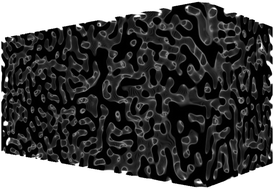Rheology of lamellar liquid crystals in two and three dimensions: a simulation study
Abstract
We present large scale computer simulations of the nonlinear bulk ![[small gamma, Greek, dot above]](https://www.rsc.org/images/entities/char_e0a2.gif) c at onset of this second regime is controlled by thermodynamic and kinetic parameters; we offer a scaling analysis that relates
c at onset of this second regime is controlled by thermodynamic and kinetic parameters; we offer a scaling analysis that relates ![[small gamma, Greek, dot above]](https://www.rsc.org/images/entities/char_e0a2.gif) c to a critical “capillary number” involving those variables. Within the defect proliferation regime, the defects may be partially annealed by slowly decreasing the applied shear rate; this causes marked memory effects, and history-dependent
c to a critical “capillary number” involving those variables. Within the defect proliferation regime, the defects may be partially annealed by slowly decreasing the applied shear rate; this causes marked memory effects, and history-dependent ![[small gamma, Greek, dot above]](https://www.rsc.org/images/entities/char_e0a2.gif) c shifts markedly upward on increasing dimensionality. This may in part reflect the reduced constraints on defect motion, allowing them to find and annihilate each other more easily. Residual edge defects in the 3D aligned state mostly point along the flow velocity, an orientation impossible in two dimensions.
c shifts markedly upward on increasing dimensionality. This may in part reflect the reduced constraints on defect motion, allowing them to find and annihilate each other more easily. Residual edge defects in the 3D aligned state mostly point along the flow velocity, an orientation impossible in two dimensions.


 Please wait while we load your content...
Please wait while we load your content...